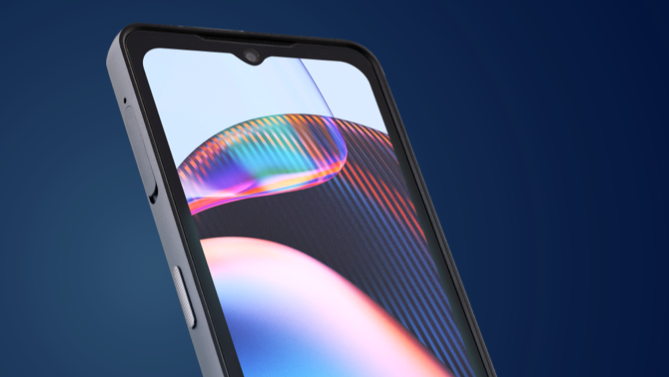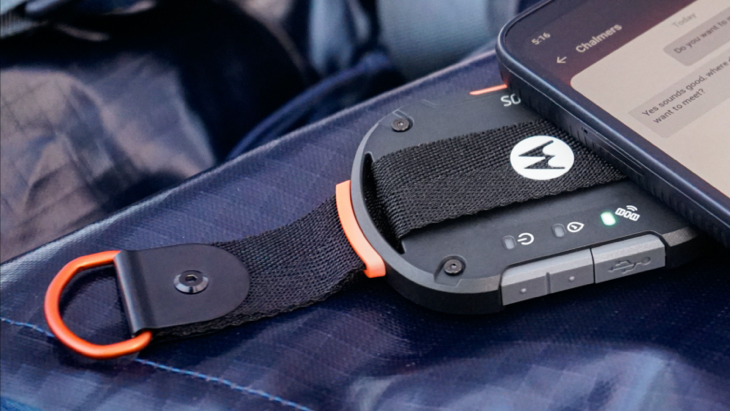Motorola is bringing iPhone-beating satellite messaging to your Android phone
Older iPhones will get satellite messaging, too

The iPhone 14 may have pioneered the idea of the satellite-connected smartphone, but now the first Android phone has launched with the feature – and it's already more powerful than Apple's Emergency SOS. Just to rub it in, Motorola has also launched a Bluetooth add-on that brings satellite messaging to both Android and iOS devices.
The Motorola Defy 2 (or CAT S75 if you live in Europe, the Middle East, and Africa) is a beefy-looking, fully waterproof Android phone that delivers two-way satellite communication that isn't just limited to contacting emergency services. Qualcomm and Samsung are also bringing satellite messaging capabilities to the next Galaxy phones – but unfortunately, the Samsung Galaxy S23 lineup likely don't have all the necessary components, so you’ll have to wait for the Galaxy S24.
In a similar way to the iPhone’s Emergency SOS via Satellite feature, you’ll be able to text via the Bullitt Satellite Messenger when you don’t have any cell service and aren’t connected to Wi-Fi. These messages can be sent to an SOS service, or to one of your contacts.
The advantage of being to message anyone is that it gives you the ability to check in with friends and family while you’re exploring the wilderness and let them know you’re safe. That way if they don’t hear from you they know they may need to contact emergency services – as you could be injured or incapacitated and unable to message for help yourself.
We were really impressed when we tried out the iPhone’s satellite phone capabilities, even though we hope it’s a feature we never have to use. Emergency SOS via Satellite allows iPhone 14 owners to communicate with emergency services even when their phone isn’t connected to Wi-Fi or a cell tower.
While standing outside and aiming your phone at a satellite (a task the phone helps you with) you're able to send and receive texts from emergency services, letting them know what has happened and where you are so they can be rescued.
Sure, the messages were slow to send and receive, but that’s the nature of satellite phone communications, and otherwise, the tool was pretty simple to use. Its inclusion in the iPhone 14 will almost certainly save people’s lives, and so we’d been hoping Android devices would get the feature soon, too.
Get daily insight, inspiration and deals in your inbox
Sign up for breaking news, reviews, opinion, top tech deals, and more.

That's now the case, starting with the Motorola Defy 2. But if you like the phone you already have then don’t worry – Motorola and Bullitt have also unveiled the Defy Satellite Link. That Bluetooth device that can turn any Android or iOS phone into a satellite phone that can communicate via the Bullitt Satellite Messenger. The rugged device has an IP68 waterproof rating and Motorola claims its 600mAh battery is enough to last for multiple days of use.
The Defy Satellite Link is launching later this year for $99 / £99, while the Motorola Defy 2/CAT S75 will sell for $599 / £549. Though you’ll need to pay extra to actually use the Bullitt service.
In the US, the Defy 2 comes with a 12-month subscription to the Essential plan, while in the UK you’ll get three months for free. After that, you’ll need to pay $4.99/€4.99 for the Essential plan which gives you the ability to send 30 two-way messages per month and access to SOS assist for 12 months. There are more expensive plans that give you access to higher message counts if you feel 30 messages isn’t enough.

Hamish is a Senior Staff Writer for TechRadar and you’ll see his name appearing on articles across nearly every topic on the site from smart home deals to speaker reviews to graphics card news and everything in between. He uses his broad range of knowledge to help explain the latest gadgets and if they’re a must-buy or a fad fueled by hype. Though his specialty is writing about everything going on in the world of virtual reality and augmented reality.